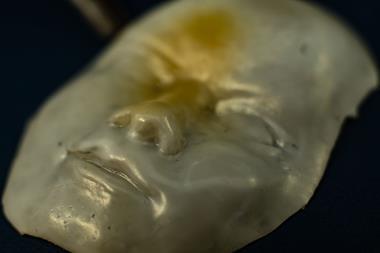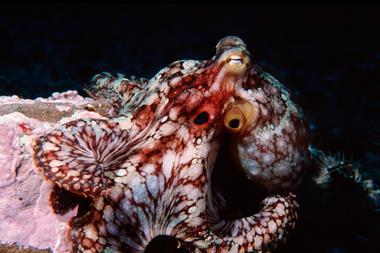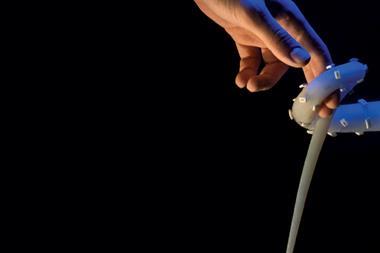The softest soft robot ever made has been unveiled by researchers in the US. They call it the octobot.
The cephalopod-inspired, tentacle-twitching machine is the first as its kind, as the only self-powering, non-tethered robot to be made entirely out of soft components. The octobot doesn’t need to be connected to an external power source, nor does it include any internal batteries or hard parts. Instead, it runs entirely on hydrogen peroxide, which breaks down in the presence of a platinum catalyst to produce gas that powers its movements.
‘Research groups around the world are interested in creating soft robots from soft materials, but these systems still require conventional power sources and electronics that really take away from the benefits and potential applications,’ says Ryan Truby from Harvard University in the US, part of the team behind the robot. ‘Our octobot is unique because it is comprised entirely of soft materials.’
The team says the development paves the way for a whole new type of soft robots ideal for applications at the human–robot interface, such as biomedicine and wearable tech.
To move the octobot, the liquid hydrogen peroxide is directed into platinum-containing reaction chambers, where it decomposes to produce oxygen and water vapour. These gases inflate balloon-like channels in the tentacles, causing them to unfurl. A microfluidic logic circuit comprising a series of valves and channels allows these movements to be coordinated. ‘The valves autonomously route the fluid out of one of two distinct outlets in an alternating fashion,’ explains Truby. This causes two sets of four tentacles to be ‘flexed’ alternately.
To assemble the robot, the team used 3D printing to create the soft outer parts, control system, actuators and catalysts in a single process. Adam Stokes, who works on soft robotics at the University of Edinburgh, UK, says this fabrication approach is impressive. ‘With a combination of different 3D printing techniques they can get that high level of system integration because they can use different types of inks,’ he says. ‘It changes the way you make machines.’ The octobot itself represents a ‘significant step towards a new class of machines where everything is integrated and everything is made of soft systems’, he adds.
References
M Wehner et al, Nature, DOI: 10.1038/nature19100
























No comments yet